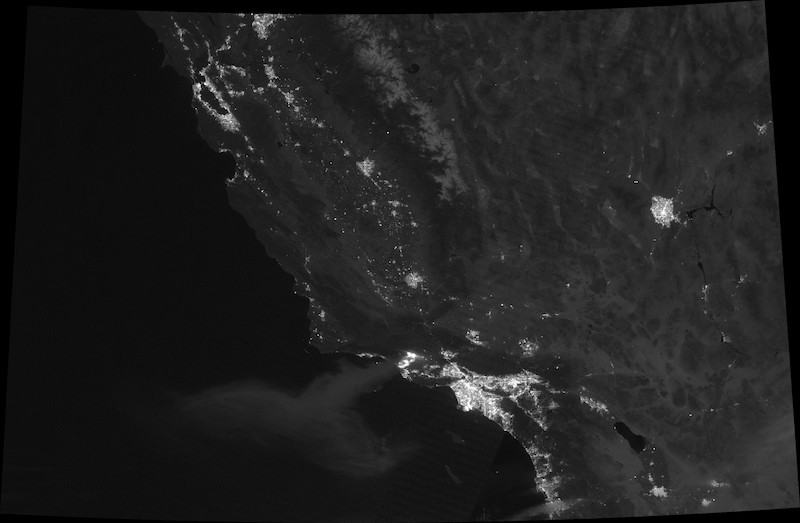The Thomas Fire Was My Personal Climate Change Moment
C+S Students are blogging about topics that interest them for Applications in Climate and Society, a core spring course.

At 2:19 a.m., a cacophony of phones violently sounding a high-pitched alarm at full volume jolted my roommates and I awake. An emergency message declaring a civil emergency and an admonishment to “evacuate now” lit up our screens.

It was December 2017—my senior year at the University of California, Santa Barbara—and fall quarter finals were set to start the next day. But the world had other plans. We’d been getting alerts about the Thomas Fire, which ignited a week earlier but this one was different.
Unlike previous alerts, this one specified no location, or whether evacuation was voluntary or mandatory. Thankfully, a correction came 29 minutes later, avoiding the accidental mobilization of 20,000 sleep-deprived, caffeine-infused college students.
Though the fire never posed a direct threat to UCSB , we still felt its impact. Power outages came intermittently all week long. Ash fell from the sky like the first snow of the season. To protect people from inhaling dangerous particulate matter, authorities handed out 500,000 N95 masks.

Over 50 percent of Americans believe they won’t be personally affected by climate change. In reality, climate change influences an increasing number of extreme weather events around the world. Most every person has experienced at least one event in their lives that was exacerbated by climate change, and the Thomas Fire was the first time I really felt the sting of climate change in my life.
California’s climate is getting drier and hotter, a pattern that will continue as global warming becomes more pronounced. As a result, California’s fire season now extends year-round. This means drier vegetation, which is further dried out during Santa Ana wind events, primes large amounts of land for ignition.
The initial spark for most fires is usually an errant match, cigarette, campfire, or downed power line. But climate change helps ensure these conflagrations are more likely to explode. The Thomas Fire was one of those explosive blazes, becoming California’s largest fire on record after burning almost 300,000 acres and over 1,000 structures (it’s since been demoted to second place by last year’s Mendocino Complex fires).
Because I experienced it personally, the Thomas Fire gave me a unique understanding of how climate change is affecting my home state. Absent the effects of climate change, the Thomas Fire might still have happened. But, would it have been nearly as devastating? Not a chance.
If we open our eyes, we can see the signs of climate change are all around us. We experience the impacts of climate change through extreme floods and droughts, earlier springs, heavier rains, stronger hurricanes, and fiercer fires.
Successful climate change communication starts with considering the individual. Explaining climate change’s impact on an event someone experienced firsthand makes it easier to understand and accept.
Inaction is rooted in misconception. Action can come when people truly understand how climate change will impact them personally, because they will mobilize to protect the things they care about.
